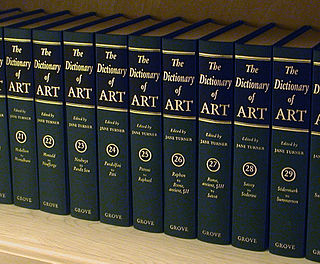
Covent Garden is a district in London, on the eastern fringes of the West End, between St Martin's Lane and Drury Lane. It is associated with the former fruit-and-vegetable market in the central square, now a popular shopping and tourist site, and with the Royal Opera House, itself known as "Covent Garden". The district is divided by the main thoroughfare of Long Acre, north of which is given over to independent shops centred on Neal's Yard and Seven Dials, while the south contains the central square with its street performers and most of the historical buildings, theatres and entertainment facilities, including the London Transport Museum and the Theatre Royal, Drury Lane.

Sir Godfrey Kneller, 1st Baronet, was the leading portrait painter in England during the late 17th and early 18th centuries, and was court painter to English and British monarchs from Charles II to George I. His major works include The Chinese Convert ; a series of four portraits of Isaac Newton painted at various junctures of the latter's life; a series of ten reigning European monarchs, including King Louis XIV of France; over 40 "kit-cat portraits" of members of the Kit-Cat Club; and ten "beauties" of the court of William III, to match a similar series of ten of Charles II's mistresses painted by Kneller's predecessor as court painter, Sir Peter Lely.

The Royal Opera House (ROH) is an opera house and major performing arts venue in Covent Garden, central London. The large building is often referred to as simply Covent Garden, after a previous use of the site. It is the home of The Royal Opera, The Royal Ballet, and the Orchestra of the Royal Opera House. The first theatre on the site, the Theatre Royal (1732), served primarily as a playhouse for the first hundred years of its history. In 1734, the first ballet was presented. A year later, the first season of operas, by George Frideric Handel, began. Many of his operas and oratorios were specifically written for Covent Garden and had their premieres there.

Cremorne Gardens were popular pleasure gardens by the side of the River Thames in Chelsea, London. They lay between Chelsea Harbour and the end of the King's Road and flourished between 1845 and 1877; today only a vestige survives, on the river at the southern end of Cheyne Walk. Cremorne is also a ward of the Royal Borough of Kensington and Chelsea. The population of the ward at the 2011 Census was 7,974.
The Benezit Dictionary of Artists is an extensive publication of bibliographical information on painters, sculptors, designers and engravers created primarily for art museums, auction houses, historians and dealers. It was published by Éditions Gründ in Paris but has been sold to Oxford University Press.

Grove Art Online is the online edition of The Dictionary of Art, often referred to as the Grove Dictionary of Art, and part of Oxford Art Online, an internet gateway to online art reference publications of Oxford University Press, which also includes the online version of the Benezit Dictionary of Artists. It is a large encyclopedia of art, previously a 34-volume printed encyclopedia first published by Grove in 1996 and reprinted with minor corrections in 1998. A new edition was published in 2003 by Oxford University Press.

The Grosvenor School of Modern Art was a private British art school and, in its shortened form, the name of a brief British-Australian art movement. It was founded in 1925 by the Scottish wood engraver Iain Macnab in his house at 33 Warwick Square in Pimlico, London. From 1925 to 1930 Claude Flight ran it with him, and also taught linocutting there; among his students were Sybil Andrews, Cyril Power, Lill Tschudi and William Greengrass.

Peter Pelham, an American portrait painter and engraver, born in England, a son of a man named "gentleman" in his will. His father, who died in Chichester, Sussex, in 1756, is revealed in letters to his son in America as a man of some property.

Samuel Scott was a British landscape painter known for his riverside scenes and seascapes.

Thomas Hearne was an English landscape painter, engraver and illustrator. Hearne's watercolours were typified by applying a wash of subtle subdued colours over a clear outline in fine brush, pen or pencil. His techniques were studied by younger artists such as Thomas Girtin and J. M. W. Turner.

John Brandard was an English lithographic artist. He designed many hundred illustrated title-pages for sheet music in what Michael Bryan judged "a pretty, though weak, style".

John Smith was an English mezzotint engraver and print seller. Closely associated with the portrait painter Godfrey Kneller, Smith was one of leading exponents of the mezzotint medium during the late 17th and early 18th centuries, and was regarded among first English-born artists to receive international recognition, along the younger painter William Hogarth.
Claude Maurice Rogers was a British painter of portraits and landscapes, an influential art teacher, a founding member of the Euston Road School and at one time the President of the London Group of British artists.
John Rutherford Armstrong was a British artist and muralist who also designed for film and theatre productions. He is most notable for the Surrealist paintings he produced.
Cyril Mahoney, known as Charles Mahoney, was a British artist and teacher, known for his large-scale mural work.
John Mansbridge (1901–1981) was a British artist. He was an official war artist during World War II and Head of Fine Art at Goldsmiths College in London.
Frances Catharine Dodgson, née Spooner, was a British artist, known for her skill as a portraitist.

Jane Hogarth (c.1709–1789) was a British printseller and businesswoman who preserved the rights to the artwork of her husband, William Hogarth, following his death. She successfully continued to produce and sell his work for many years, working around the legal restrictions placed on women in her time.
Antoine Benoist was a French draughtsman and engraver, who spent much of his working life in London, and was known as Anthony Benoist.













